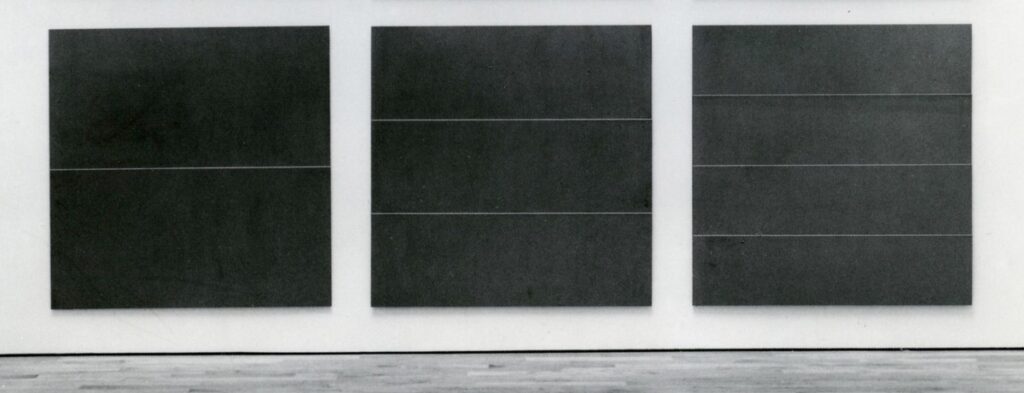

Between the years 1967 and 1992, Donald Judd made eight different sets of works in editions ranging from three to two hundred. As diverse as his unique works in three dimensions, Judd’s works in editions were made for the floor, the wall, and the table in a range of materials: stainless steel, galvanized iron, cold-rolled steel, anodized aluminum, acrylic sheet, and wood. His concern with space, color, and material are expressed across his work in three dimensions, although his works in editions are often smaller, with the largest individual work in a set measuring one meter in length and width.
Judd’s first work in edition, a folded stainless steel work made by Bernstein Brothers in 1967 was produced for Ten from Leo Castelli, published by Tanglewood Press.
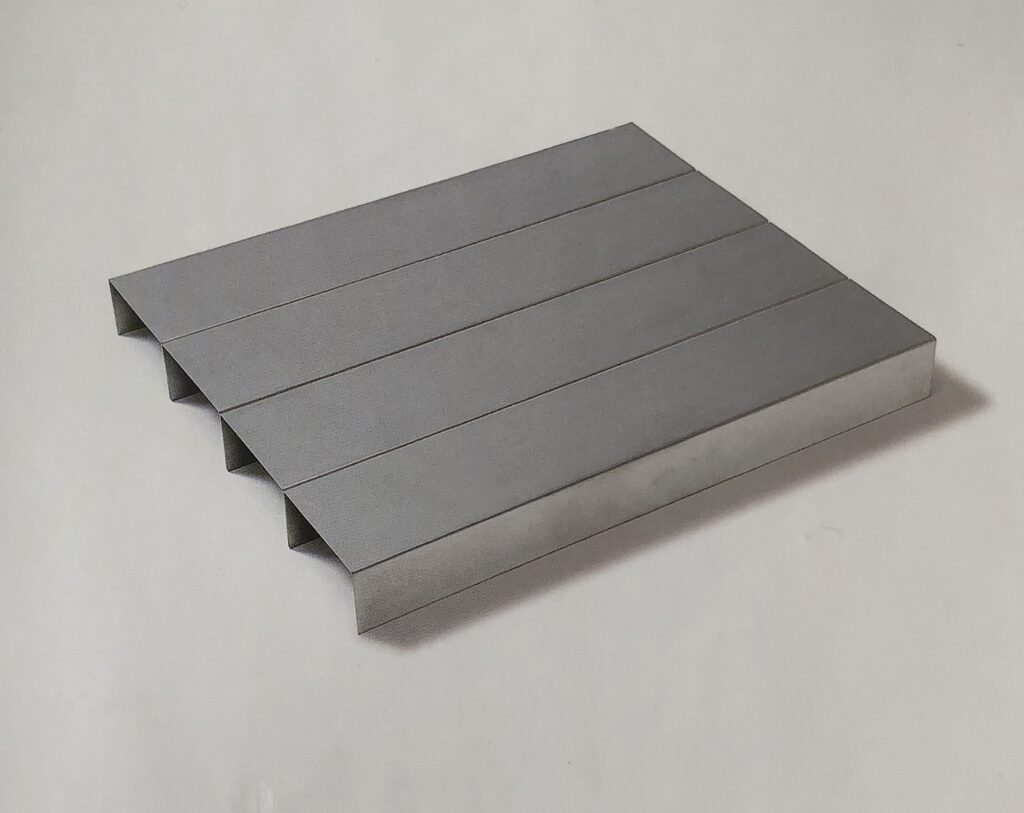
Donald Judd, untitled, 1967, stainless steel (folded), 24 x 20 x 2 5/8 inches (61 x 51 x 6.7 cm), edition of 200
The portfolio included objects by 10 artists. Of the works in the portfolio, all were screenprints, with the exception of Judd’s object in stainless steel and Robert Morris’s work.
In 1967, the same year that Judd made his stainless steel work in edition, Judd first used folded stainless steel to create a single unit wall work. Judd also used the same method and dimensions of this individual wall-work to create a stack of 10 units in 1968.
The works referred to colloquially as “folded meter” pieces are a series of three variations of works for the wall, each individually folded, and made in three different metals, cold rolled steel, galvanized iron, and stainless steel to create nine works.
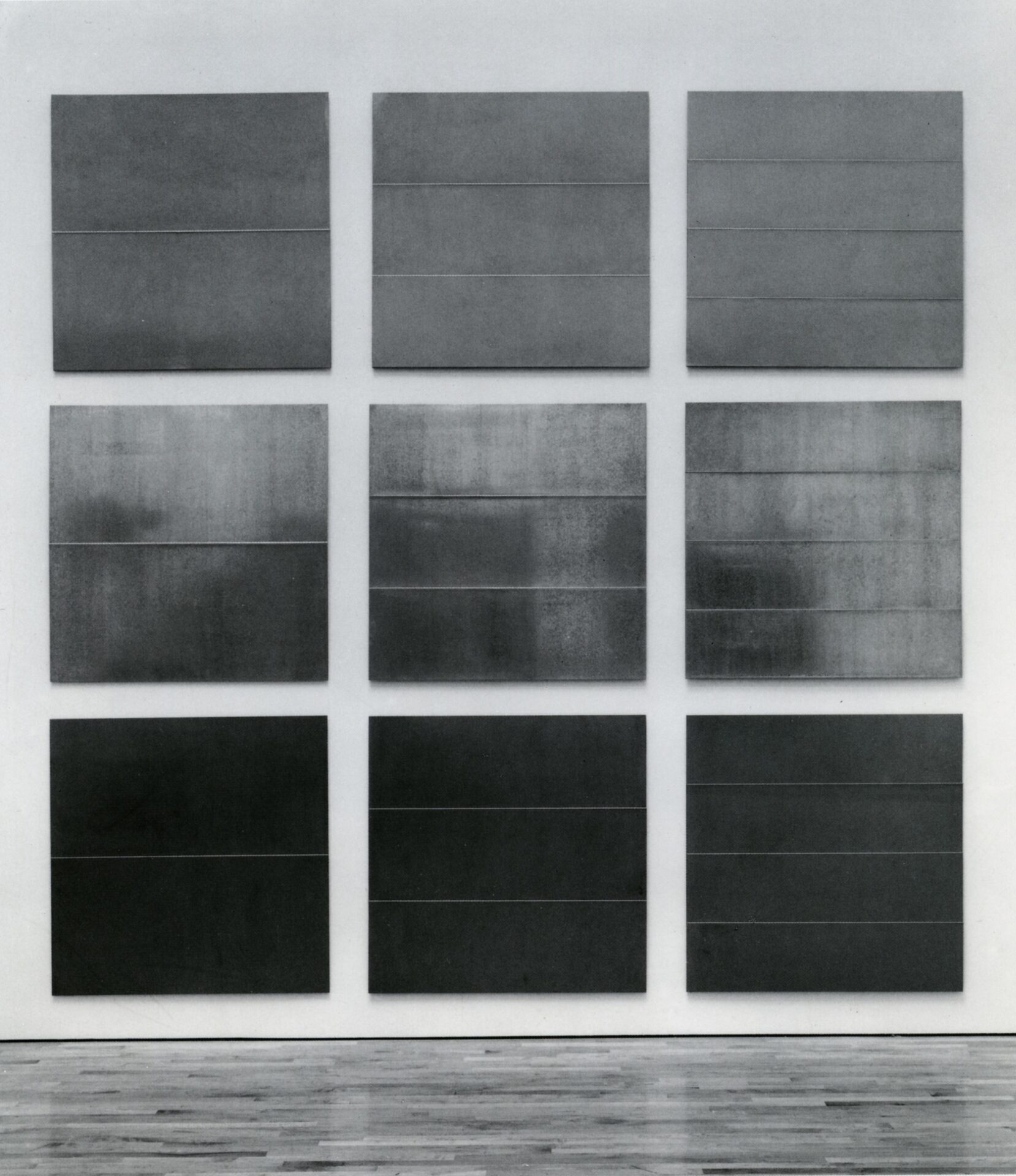
Donald Judd, untitled 1983, cold-rolled steel, galvanized iron, stainless steel, 9 units each 39.5 x 39.5 inches (100 x 100 cm), various depths, edition of 3
The three variations correspond to easily perceptible divisions of 1/2 , 1/3, and 1/4. See the following undated drawing where you can see Judd sketching the various ideas for the proportions and folds.
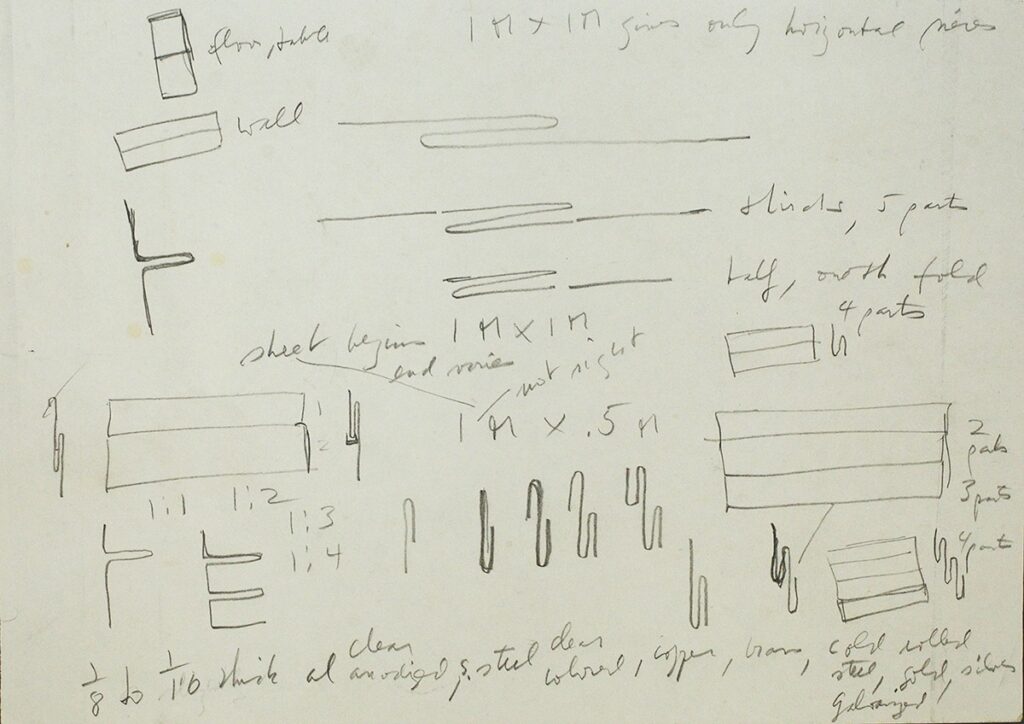
Donald Judd, [untitled drawing], undated, pencil on paper, 8 3/16 x 11 9/16 in. (20.8 x 29.5 cm)
Proportion is a central feature of Judd’s work and one that he reflected upon repeatedly in his writings, noting, proportion is “visible reasonableness” and writing more substantially in “Art and Architecture” (1983) that:
Proportion is very important to us, both in our minds and lives and as objectified visually, since it is thought and feeling undivided, since it is unity and harmony, easy or difficult, and often peace and quiet. Proportion is specific and identifiable in art and architecture and creates our space and time. Proportion and in fact all intelligence in art is instantly understood, at least by some. It’s a myth that difficult art is difficult. (Donald Judd Writings, 347-8)
The meter was a standard unit that Judd used in numerous works beginning in earnest in the late 1970s with the construction of 50 x 100 x 50 cm single unit wall pieces in wood and metal. Beginning in the early 1980s (through 1994) Judd began to make pieces comprised of multiple units of 50 x 100 x 50 cm in arrangements of 2, 4, 5, 6, 7 and 8 units, hung both horizontally and vertically, depending on number of units.
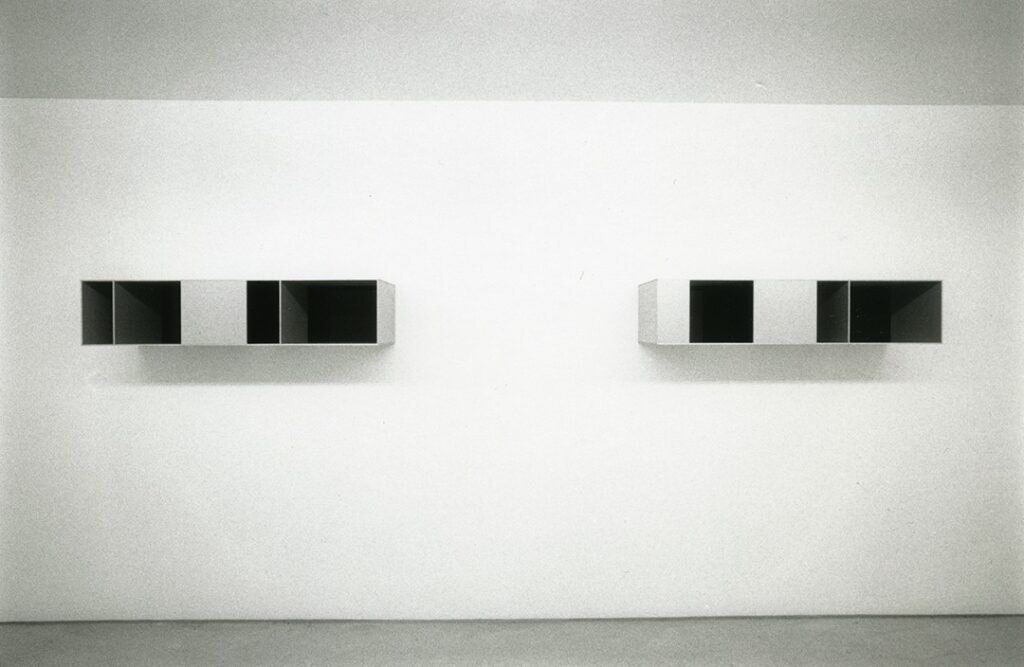
Installation view of Donald Judd, Annemarie Verna Galerie, Zürich, November 26, 1994-November 2, 1995
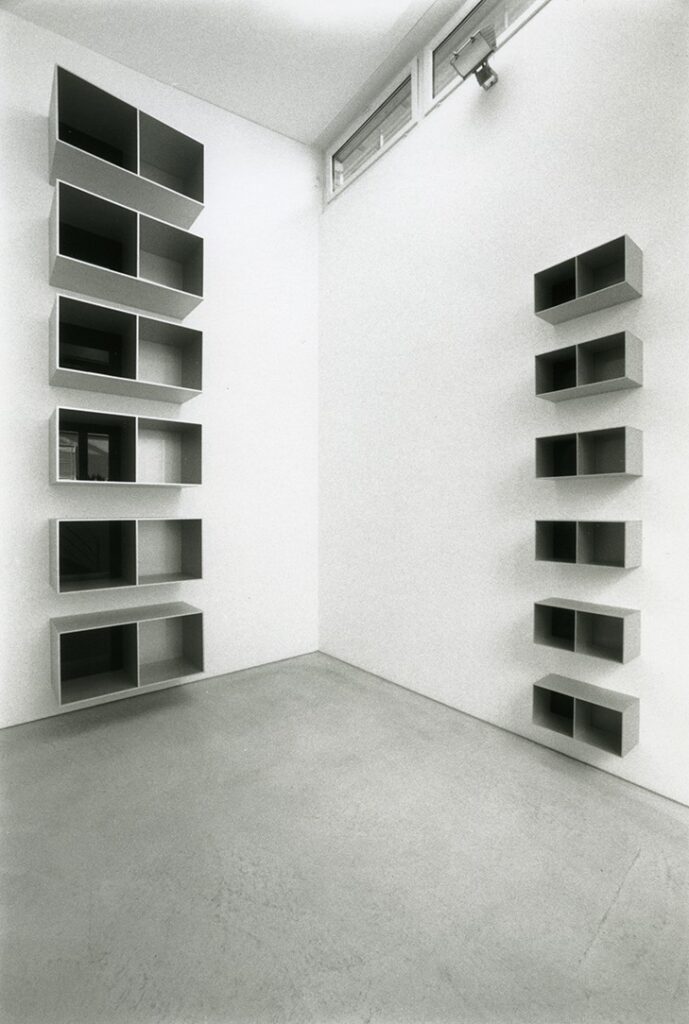
Installation view of Donald Judd, Annemarie Verna Galerie, Zürich, November 26, 1994-November 2, 1995
The following is a drawing dated 1 January 1987 for a work in 50 x 100 x 50 cm dimensions.

Donald Judd, [untitled drawing], January 1, 1987, pencil on paper, 11 9/16 x 8 3/16 in. (29.5 x 20.9 cm)
In 1991, Judd designed an edition of twelve works in extruded aluminum, with twelve individual extruded works in each set. As opposed to his other works that were often constructed out of multiple sheets of wood, metal, or acrylic sheet and then screwed or adhered together, the extruded works were created by pressing heated aluminum through a die to create a specific shape designed by Judd. The mechanical drawing of the die produced by the fabricator, Menziken AG, can be seen below.
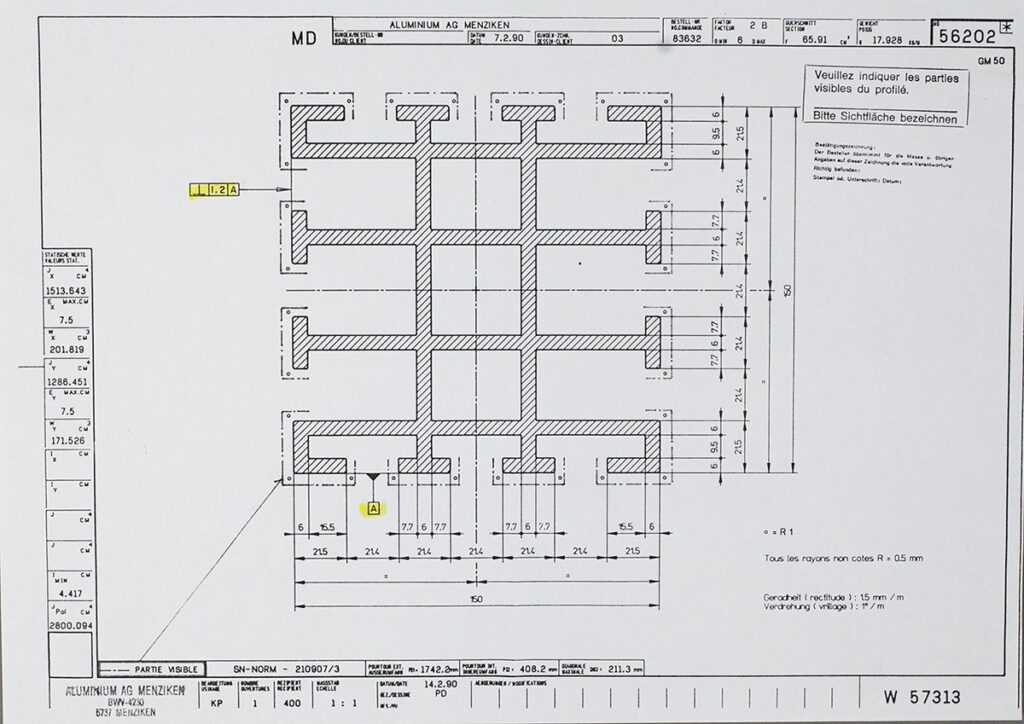
[untitled technical drawing for extruded piece by Donald Judd], February 7, 1992, photocopy, 8 1/4 x 11 9/16 in. (21 x 29.5 cm)
These pieces were then anodized one of 11 colors or left clear to form 12 pieces in the edition. Judd preferred the anodizing process to painting methods, stating that he liked “the color to be in the material” and that, “Anodized aluminum, even though it’s a surface too, is a little better to me, because at least a little layer of it is color in the material” (Interview with Angeli Janhsen for Donald Judd, Kunstverein St. Gallen, Switzerland, March 22, 1990).
The second to last work in edition that Judd made was published by Edition Schellmann and is the only work, edition or unique, that is made with extruded metal with each piece made from one block of metal. In April, Judd Foundation opened the exhibition 15 x 105 x 15 on the ground floor of 101 Spring Street. The installation presents Judd’s extruded works in edition as a full set installed on both the floor and the walls. 15 x 105 x 15 is open to the public through July 28, 2018.